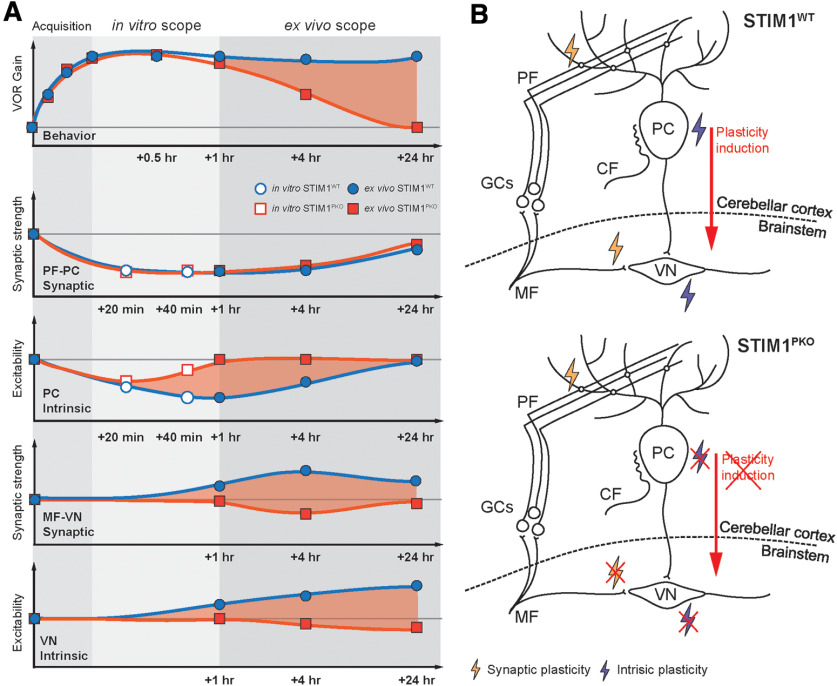Figure 9.
Schematic illustration for memory trace of VOR memory. A, Summary of behavioral tests and in vitro and ex vivo recordings showing temporal order of the memory retention and neural plasticity in PCs and VN neurons. Red shade represents differences between WT and STIM1PKO mice. VOR memory retention level is maintained over 1 d, whereas the motor memory is declined at mid-term period (1-4 h) and long-term (24 h) in STIM1PKO mice. Bottom, Alterations of the neural activity corresponding to each period. There is no difference in PF-PC synaptic plasticity between WT and STIM1PKO mice. However, learning-induced LTD-IE is abolished within an hour in STIM1PKO, and the difference in PC intrinsic plasticity between groups may lead to MF-VN synaptic plasticity and intrinsic plasticity of VN neurons (red shade). Furthermore, the peak difference of each plot seems to move from 1 to 24 h after learning, indicating that the plasticity in cerebellar PCs and VN neurons is connected in order. Thus, we speculate that PC intrinsic plasticity, which plays a role in linking between the cerebellum and VN, but not PF-PC synaptic plasticity, underlies behavioral difference between WT littermates and STIM1PKO (top, red shade). B, Schematic illustration of neural circuit for VOR memory storage shown in WT (top) and STIM1PKO mice (bottom). For successful memory acquisition and storage, four different types of neural plasticity are necessary (synaptic and intrinsic plasticity in the PCs and VN neurons). Especially, intrinsic plasticity of PC has an important role to induce plasticity in the brainstem (top). When PC intrinsic plasticity is abolished, synaptic and intrinsic plasticity in VN neurons are impaired, thereby failing to induce plasticity in the brainstem (bottom).

